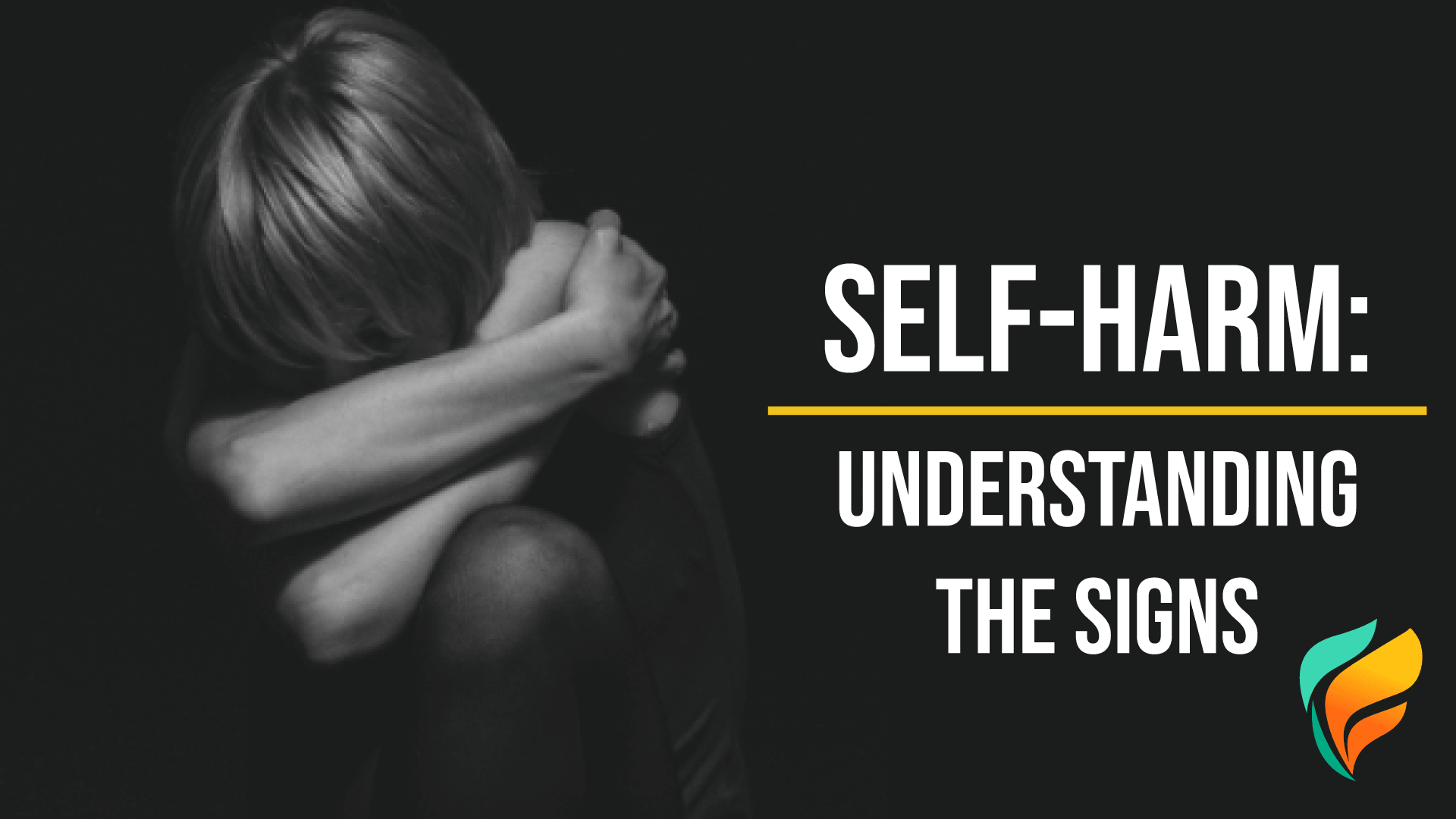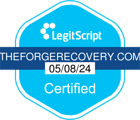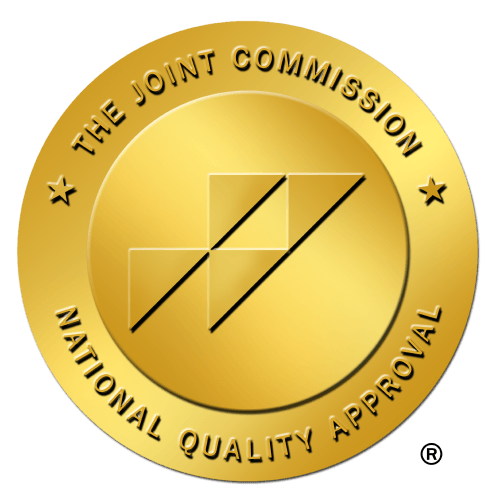Self-Harm: The Faces of Self-Harm, a Battle Behind Closed Doors


Self-harm is one of the most dangerous symptoms of mental health disorders. Learn about this difficult, but important, subject in our blog.
Content warning: This article extensively discusses self-harm.
Self-harm is a battle fought in the shadows of despair, a language of pain spoken by those who feel trapped within their own suffering. It leaves no visible scars but indelible wounds on the soul.
In today's world, where conversations about mental health are becoming increasingly crucial, it's vital to address the topic of self-harm. Often stigmatized and misunderstood, this subject is uncomfortable but cannot be ignored. Failing to address it only prolongs the suffering of those silently grappling with it. By shedding light on this sensitive issue, we can raise awareness, break down stigma, and offer essential support to individuals facing this challenge.
This article aims to journey into the complex world of self-harm. We will explore the different forms it can take and its profound impact on those who engage in these behaviors. By gaining a deeper understanding of this issue, we can move towards a more compassionate and informed approach to help those who need it most.
What Is Self-Harm?
Self-harm, often referred to as deliberate self-injury or self-mutilation, is a deeply distressing behavior characterized by intentional harm to one's own body. It is essential to approach this topic with empathy and sensitivity, recognizing that individuals who engage in self-harm often grapple with profound emotional pain.
Fundamentally, self-harm includes behaviors such as cutting, burning, hitting, scratching, or other methods that result in physical harm. It's crucial to stress that self-harm should not be viewed as a mere choice, attention-seeking behavior, or a desire for pain. Instead, it must be understood as a coping mechanism employed by individuals overwhelmed by intense emotions and struggling to manage them in healthier ways.
Acknowledging self-harm as an indication of emotional distress is of utmost importance. Many who self-harm are dealing with feelings of sadness, anger, guilt, shame, or numbness that may be difficult to express or understand. In the absence of effective coping strategies, self-harm can provide temporary relief from emotional pain. It manifests the inner turmoil and desperation experienced by those who engage in it.
Types of Self-Harm
It is important to recognize the various types of self-harm, understanding their distinctions, and the importance of seeking help when needed.
Non-Suicidal Self-Injury (NSSI)
Non-suicidal self-injury (NSSI) is a deliberate act of harming oneself without the intent to commit suicide. It's essential to distinguish NSSI from suicide attempts, as individuals engaging in NSSI are typically seeking relief from emotional turmoil rather than seeking to end their lives.
Standard methods of NSSI include:
Cutting: This involves using sharp objects to create cuts on the skin, often on the arms, legs, or wrists.
Burning: Individuals may use open flames, heated objects, or cigarettes to burn skin.
Hitting or Scratching: Some people resort to hitting or scratching themselves to cope with emotional pain.
Individuals may engage in NSSI to:
Cope with Emotions: NSSI often provides temporary emotional relief or a sense of control in moments of distress.
Express Inner Turmoil: When words fail to express emotional pain, NSSI can become a physical outlet for inner turmoil.
Suicidal Self-Harm
Suicidal self-harm involves deliberate actions with the intent to end one's life. It's crucial to differentiate between NSSI and suicidal self-harm, as the latter poses a severe risk to an individual's life. Suicidal self-harm can include actions like overdosing on medication or attempting to harm oneself in ways that are likely to be fatal.
The gravity of suicidal self-harm cannot be overstated:
Risk to Life: Suicidal self-harm directly threatens an individual's life and requires immediate professional help and intervention.
Self-Harm Through Risky Behaviors
Self-destructive tendencies may be expressed through hazardous behaviors such as excessive alcohol or drug consumption. Individuals may engage in these behaviors to escape or numb emotional pain.
Links between risk-taking behavior and self-harm include:
Coping Mechanism: These behaviors serve as a coping mechanism, albeit destructive, to manage emotional distress.
Addiction Risk: Over time, these behaviors can lead to addiction, exacerbating emotional difficulties.
Treating self-harm through risky behaviors often involves:
Addiction Treatment: Addressing substance abuse issues.
Mental Health Support: Comprehensive mental health support to address the root causes of the behavior.
Eating Disorders as Self-Harm
Eating disorders, such as anorexia nervosa, bulimia nervosa, and binge-eating disorder, can also be considered as self-destructive behaviors. These conditions encompass harmful patterns of behavior connected to food and body image.
Forms of self-harm through eating disorders include:
Restrictive Eating: Severely restricting food intake as a method of exerting control.
Binge Eating: Consuming excessive amounts of food within a brief period, often accompanied by feelings of guilt and shame.
Purging: Inducing vomiting or using laxatives to eliminate consumed food.
Psychological aspects of eating disorders as self-destructive behaviors:
Distorted Body Image: Individuals may have a distorted perception of their bodies.
Low Self-Esteem: Often accompanied by low self-esteem and a need for perfection.
Treatment for eating disorders involves:
Therapy: Customized therapeutic methods designed to address the individual's unique eating disorder characteristics.
Nutritional Support: Addressing physical health alongside psychological aspects.
Emotional Self-Harm
Emotional self-harm involves harming oneself psychologically or emotionally. This can manifest as negative self-talk, self-sabotage, or persistent self-criticism.
Forms of emotional self-harm include:
Negative Self-Talk: Engaging in constant self-criticism and self-blame.
Self-Sabotage: Undermining one's own efforts and success.
Addressing emotional self-harm involves:
Cognitive-Behavioral Therapy (CBT): CBT helps individuals challenge and reframe negative thought patterns.
Healthy Coping Strategies: Developing healthier coping mechanisms for managing emotional distress.
Why Do People Self-Harm?
While it may be difficult to comprehend why someone would engage in self-harm, delving into the underlying reasons can provide valuable insights into this behavior.
Coping with Emotional Pain
One of the primary reasons people turn to self-harm is to cope with overwhelming emotional pain. Life can be filled with stress, anxiety, depression, and traumatic experiences; for some individuals, these emotions become unbearable. Engaging in self-harm may offer a momentary respite by distracting from emotional distress.
Managing Stress
Stress is a common trigger for self-harm. When faced with high levels of stress, some individuals may resort to self-harming behaviors as a way to regain a sense of control over their emotions. This way, self-harm may function as an unhealthy coping mechanism.
Trauma and Unresolved Issues:
Individuals who have experienced trauma, abuse, or unresolved emotional issues may use self-harm to express their pain. It can be challenging to verbalize the emotional scars left by such experiences, and self-harm may serve as an outlet for these intense emotions.
Lack of Healthier Coping Mechanisms:
A significant factor contributing to self-harm is the absence of healthier coping mechanisms. Some individuals may not have learned effective ways to manage their emotions or may not have access to mental health resources. As a result, they turn to self-harm as a readily available way to cope.
Addressing Misconceptions About Self-Harm
It's crucial to dispel the misconception that self-harm is purely attention-seeking behavior. While some individuals who self-harm may inadvertently draw attention to their wounds, it's important to recognize that their primary motivation is not to seek attention but to alleviate emotional pain.
Many people who self-harm go to great lengths to hide their actions and wounds from others due to shame, guilt, or fear of judgment.
Find Hope at The Forge Recovery Center
Our admissions coordinators are standing by 24/7 to answer your questions, provide guidance, and schedule an initial assessment. Let us help you determine if our programs are the right fit to meet your needs.

Recognizing the Signs of Self-Harm
Identifying the indicators of self-harm is essential for providing assistance and taking appropriate action. It is essential to approach individuals with compassion and understanding rather than judgment. Here, we will discuss the physical and behavioral signs indicating someone engaging in self-harm and how to respond empathetically.
Physical Signs of Self-Harm
Unexplained Cuts or Bruises: Frequent or unexplained cuts, scratches, or bruises in the upper arms, thighs, or abdomen can be a sign of self-inflicted injuries.
Wearing Concealing Clothing: Individuals who self-harm often wear clothing that covers their arms and legs to hide their injuries, even in hot weather.
Frequent Use of Bandages or Coverings: Repeatedly using bandages, gauze, or other coverings on the same areas may indicate ongoing self-harm.
Scars in Various Stages of Healing: Noticeable scars, particularly those in different stages of healing, may suggest a history of self-injury.
Possession of Sharp Objects: Discovering an unusual collection of sharp objects like razors, knives, or broken glass in personal belongings may be a sign.
Behavioral Signs of Self-Harm
Isolation: Individuals who self-harm may become increasingly withdrawn or isolated. They may avoid social activities and close relationships.
Wearing Long Sleeves/Pants Year-Round: Wearing concealing clothing consistently, regardless of the weather, is a behavioral indicator.
Frequent Excuses: Offering frequent explanations for injuries that don't seem to match the severity of the wound, such as blaming accidents, pets, or clumsiness.
Emotional Instability: Frequent mood swings, unexplained anger, depression, or anxiety can be linked to self-harm as it often serves as a way to manage overwhelming emotions.
Evidence of Self-Blame: Expressing guilt, self-blame, or low self-esteem is common among individuals who self-harm.
Approaching with Compassion and Support for Self-Harm
When you suspect someone you know may be engaging in self-harm, it's crucial to approach them with empathy and support rather than criticism or judgment. Here are some tips:
Choose the Right Time and Place
Find a quiet, private, and non-confrontational setting to talk.
Express Concern
Use "I" statements to express your concern, such as "I've noticed you have some injuries, and I'm worried about you."
Listen Actively
Allow the person to share their feelings and experiences without interrupting or offering solutions immediately.
Avoid Blame
Refrain from blaming or accusing them, which can lead to defensiveness.
Offer Resources
Encourage them to seek professional help and offer to assist in finding a therapist or counselor.
Stay Supportive
Let them know you are there to support them throughout their journey to recovery.
Seeking Help and Support for Self-Harm
Self-harm can be challenging and distressing to confront, whether personally or when supporting someone who may be engaged in self-harming behaviors. Recognizing that help and support are available is crucial. Here, we will explore various avenues for assistance:
Self-Help Strategies
When dealing with the impulse to engage in self-harm, there exist numerous positive strategies that individuals can utilize to handle their emotions and discover healthier ways to cope:
Mindfulness Techniques
Mindfulness involves focusing on the present moment and acknowledging feelings without judgment. Deep breathing exercises, meditation, or guided imagery can help individuals stay grounded during distress.
Journaling
Keeping a journal allows individuals to express their thoughts and emotions safely and privately. It can provide insights into triggers and patterns and help manage overwhelming feelings.
Creative Outlets
Engaging in creative activities such as art, music, or writing can be therapeutic. These outlets offer a means to express and channel emotions into something positive.
Professional Help for Self-Harm
Occasionally, self-harming behavior can signal underlying emotional issues that necessitate the assistance of a qualified professional. Seeking the help of trained mental health professionals can be instrumental in the recovery process:
Therapists and Counselors
Licensed therapists and counselors specialize in helping individuals manage their emotional challenges. Therapies like Cognitive-Behavioral Therapy (CBT), Dialectical Behavior Therapy (DBT), and mindfulness-based approaches are often effective in treating self-harm tendencies.
Psychiatrists
Psychiatrists are medical doctors who can prescribe medication to address underlying mental health conditions like depression, anxiety, or borderline personality disorder, which may contribute to self-harming behaviors. Medication, when combined with therapy, can be highly effective.
Support Networks for Self-Harm
Support from friends and family, as well as connecting with others who have experienced similar struggles, can provide a strong foundation for healing:
Friends and Family: The support of loved ones is invaluable. They can offer understanding, encouragement, and a sense of belonging. Open communication and empathy are key in these relationships.
Support Groups: Joining a support group for individuals dealing with self-harm or related mental health issues can provide a sense of community and understanding. Sharing experiences with others who have faced similar challenges can be remarkably comforting.
Helplines: Various helplines and crisis hotlines are available for individuals who may feel isolated or emotionally distressed. These services provide a listening ear and can guide where to seek help.
The importance of seeking help and offering support cannot be overstated. Professional help is extremely significant through therapy, counseling, or psychiatric treatment. Support networks, such as friends, family, and support groups, can play a vital role in the journey toward recovery.
Are You Struggling with Mental Health or Addiction?
We Can Help. Call Us Now!
CALL: 877-839-1772
The Forge Recovery Center Can Help Stop Self-Harm
Guided by a trauma-informed philosophy, The Forge Recovery Center has deep knowledge and experience in treating self-harm. We’ve carefully created the ideal place to recover, where the emotional and mental causes that drive self-harm can be examined and treated effectively. Our evidence-based mental health programs feature counselors, medication support mental health housing, and more.
Self-harm is a cry for help. When it’s ignored, it can become fatal. Please reach out to The Forge Recovery Center today to learn more about our mental health care programs.
Are You Struggling with Mental Health or Addiction?
We Can Help. Call Us Now!
CALL: 877-839-1772





